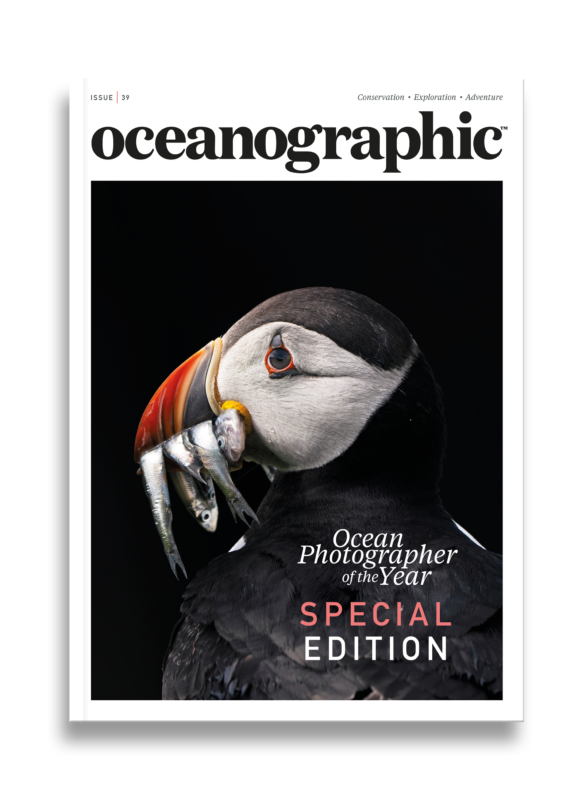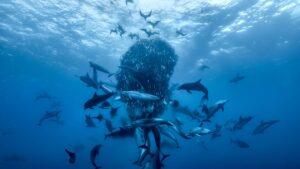What we know of the deep seafloor... hasn't scratched the surface
To put a more quantifiable figure on it, researchers from the Ocean Discovery League and the National Geographic reveal that, in fact, only 0.001% of the deep seafloor has been visually observed in the 70 years since deep-sea exploration really began.
A new study intended to uncover the gaps and biases in ocean exploration and our understanding of global biodiversity has this week revealed that whatever we thought we knew of the deep seafloor is but a fraction of what is left to discover.
To put a more quantifiable figure on it, researchers from Ocean Discovery League reveal that, in fact, only 0.001% of the deep seafloor has been visually observed in the 70 years since deep-sea exploration really began.
The groundbreaking study has been published in Science Advances and goes to new lengths to stress that while the deep ocean covers around 66% of the Earth’s surface, its deepest depths remains largely unexplored.
The study, How Little We’ve Seen: A Visual Coverage Estimate of the Deep Seafloor is the first to document that, in decades of deep-sea exploration, humans have observed less than 0.001% of the deep seafloor – a total area roughly the size of Rhode Island. Or one tenth the size of Belgium.
The deep ocean, defined as being deeper than 200 metres, sustains diverse ecosystems and provides essential services, including oxygen production, climate regulation, and crucial pharmaceutical discoveries, and plays a critical role in maintaining the health of our planet. Yet, despite its importance, research into this immense ecosystem is severely limited.
The visual surveys we do have are primarily focused on just a few regions and countries. Yet, visual imaging is one of the most critical methods to study the deep seafloor and one of the three key pillars of ocean exploration, alongside mapping and sampling.
“As we face accelerated threats to the deep ocean – from climate change to potential mining and resource exploitation – this limited exploration of such a vast region becomes a critical problem for both science and policy,” said Dr Katy Croff Bell, president of Ocean Discovery League, a National Geographic Explorer, and lead author of the study.
“We need a much better understanding of the deep ocean’s ecosystems and processes to make informed decisions about resource management and conservation.”

Using data from approximately 44,000 deep-sea dives with observations conducted since 1958, across the waters of 120 different countries, this study is the most comprehensive global estimate of deep-sea benthic observations to date and highlights the disparity in global exploration efforts. Given that not all dive records are public, the researchers assert that even if these estimates are off by a full order of magnitude, less than one-hundredth of the 1% of the seafloor would have any visual records.
In addition, almost 30% of documented visual observations were conducted before 1980 and often resulted in only black and white, low-resolution, still imagery.
Remarkably, a majority of these visual observations have occurred within 200 nautical miles of just three countries: the United States, Japan, and New Zealand. Due to the high cost of ocean exploration, a mere handful of nations dominate deep-sea exploration, with five countries – the US, Japan, New Zealand, France, and Germany – responsible for 97% of all deep-sea submergence observations.
This bias in geographic coverage and operator representation has led the oceanographic community to base much of its characterisation of the deep ocean ecosystem on this incredibly small and unrepresentative sample.
There’s also a stark gap in knowledge regarding seafloor habitats. It’s true that much focus to date has been on geomorphological features, such as canyons and ridges, while vast areas, including abyssal plains and seamounts have remained under-explored.
Together, these findings underscore the urgent need for a more comprehensive and global effort to explore the deep ocean, ensuring that scientific research and conservation efforts accurately reflect the true extent of the seafloor.
To address these challenges, researchers have now called for expanding these exploration efforts and utilising emerging technologies to increase access to the deep ocean. With advancements in smaller, more affordable deep-sea tools, there is an opportunity to broaden the scientific community’s reach, including low- and middle-income nations in ocean exploration and research.
“There is so much of our ocean that remains a mystery,’ said Dr Ian Miller, chief science and innovation officer at the National Geographic Society, which contributed funding for this work. “Deep-sea exploration led by scientists and local communities is crucial to better understanding the planet’s largest ecosystem.
“Dr Bell’s goals to equip global coastal communities with cutting-edge research and technology will ensure a more representative analysis of the deep sea. If we have a better understanding of our ocean, we are better able to conserve and protect it.”
This study represents a crucial step in understanding the gaps in ocean exploration and the need for comprehensive global strategies to ensure the protection and sustainable management of the deep ocean. The authors hope these findings will encourage more scientific collaboration, leading to a deeper understanding of our planet’s most vital ecosystem.
The paper, How Little We’ve Seen: A Visual Coverage Estimate of the Deep Seafloor has been published in the scientific journal, Science Advances.


"*" indicates required fields
Printed editions
Current issue
Back issues

Back Issues
Issue 41 Holdfast to the canopy

Back Issues
Issue 39 Special Edition: OPY2024
Enjoy so much more from Oceanographic Magazine by becoming a subscriber.
A range of subscription options are available.








